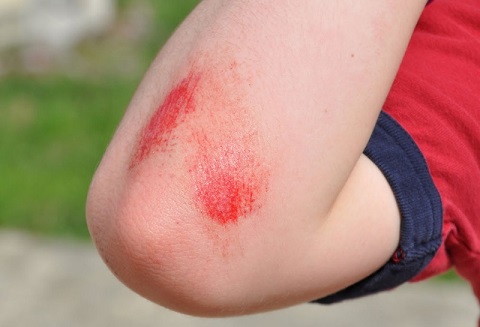Wound care is a critical aspect of healthcare, whether you have a minor cut or a surgical incision. Understanding how to tell if a wound is healing or infected is essential for proper care and preventing complications. This article will guide how to tell if a wound is healing or infected.
Signs of a Healing Wound:
A healing wound typically progresses through several stages, and certain signs indicate that the healing process is underway:
- Reduced Swelling: As the body repairs the damaged tissue, swelling around the wound usually decreases over time. Initially, there may be some swelling, but it should gradually improve.
- Decreased Pain: Pain is a common symptom of wounds, but as the healing process continues, pain should become less severe and more manageable. Discomfort may persist but should not worsen.
- Closure of the Wound: A healing wound will gradually close and form a scab or crust. This scab helps protect the wound and prevent infection. In some cases, wounds may close with the help of sutures, staples, or adhesive strips.
- Less Redness: Initially, a healing wound may appear red or pink, which is a sign of increased blood flow to the area. As healing progresses, the redness should diminish.
- Decreased Drainage: In the early stages, wounds may produce clear or slightly yellow fluid. As the wound heals, this drainage should decrease and eventually stop.
- Skin Regeneration: You’ll notice that the skin around the wound starts to regenerate. It may appear smoother, and new tissue will develop over the wound site.
Signs of an Infected Wound:
In contrast, an infected wound can be a serious concern. Infections can occur when bacteria or other microorganisms enter the wound site. Here are some signs that a wound may be infected:
- Increased Pain: An infected wound often becomes more painful instead of gradually improving. The pain may be throbbing, sharp, or constant.
- Swelling and Redness: While some degree of redness and swelling is normal in the early stages of wound healing, an infected wound may become increasingly swollen, red, and warm to the touch.
- Pus or Discharge: Infected wounds often produce pus, which can be yellow, green, or cloudy. The presence of pus is a clear sign of infection.
- Increased Drainage: Instead of decreasing, drainage from the wound may increase, and the fluid may become thicker and more purulent.
- Foul Odor: An unpleasant or foul odor coming from the wound can be a sign of infection. This odor is usually due to the presence of bacteria.
- Fever: Systemic signs of infection can include fever, chills, and an overall feeling of illness. If you experience these symptoms along with a wound that’s not healing well, it’s essential to seek medical attention promptly.
- Delayed Healing: An infected wound may not show signs of improvement and may even get worse over time. It may remain open and refuse to close.
- Spreading Redness: A condition known as cellulitis can occur when the redness around the wound spreads beyond the immediate area. This is a concerning sign of infection.
When to Seek Medical Attention:
If you notice signs of infection in a wound, it’s crucial to seek medical attention promptly. Delayed treatment can lead to complications such as abscess formation or the infection spreading to deeper tissues. Additionally, certain wounds, such as those from animal bites, puncture wounds, or injuries in areas with limited blood supply, are at a higher risk of infection and may require immediate medical evaluation.
Overall, keeping a close eye on the progression of your wound and recognizing signs of healing or infection is essential for proper wound care. When in doubt, it’s always better to consult a healthcare professional for guidance and treatment to ensure the best possible outcome for your wound healing process.


